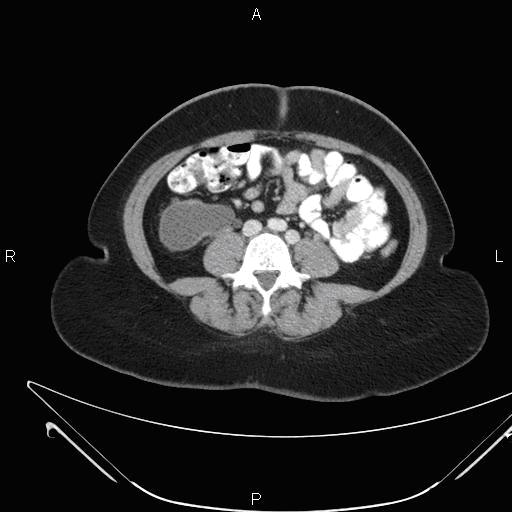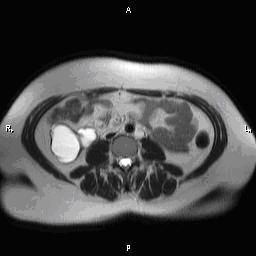Cyst develops from the mesentery
The patient was a 30-year-old woman who had right lower quadrant pain for several months.
CLINICAL HISTORY
The patient was a 30-year-old woman who had right lower quadrant pain for several months. Her past medical history was noncontributory. She has regular menstrual cycles, was not pregnant, and had no pertinent travel history. Routine lab studies revealed a normal white blood cell count and normal erythrocyte sedimentation rate. On physical exam there was minimal tenderness and fullness in the right lower quadrant. She was not febrile.

A contrast CT of the abdomen and pelvis was performed (Figure 1). This was followed by a contrast MRI of the abdomen.
DISCUSSION
The CT image demonstrates a cystic mass with a lobulated border within the right lower quadrant, adjacent to the cecum, which appears separate from the appendix. The mass has several thin septations and has some enhancement of its wall. MRI (Figures 2 and 3) confirms this, in addition to showing the mass to be likely arising from the mesentery and not from an intestinal loop. The mass was not believed to be ovarian in etiology.


The patient was referred for surgery and the mass was removed. Pathology revealed the mass to be a mesenteric midgut duplication cyst.
There was evidence of smooth muscle layer and a ciliated respiratory epithelial layer as well. The mass was separate from the bowel and likely had developed its own blood supply.
Dr. Spitzer is associate director of radiology at Montgomery Hospital in Norristown, PA. He can be reached at lspitzer@mont-hosp.com.
The Reading Room Podcast: Current Perspectives on the Updated Appropriate Use Criteria for Brain PET
March 18th 2025In a new podcast, Satoshi Minoshima, M.D., Ph.D., and James Williams, Ph.D., share their insights on the recently updated appropriate use criteria for amyloid PET and tau PET in patients with mild cognitive impairment.
Meta-Analysis Shows Merits of AI with CTA Detection of Coronary Artery Stenosis and Calcified Plaque
April 16th 2025Artificial intelligence demonstrated higher AUC, sensitivity, and specificity than radiologists for detecting coronary artery stenosis > 50 percent on computed tomography angiography (CTA), according to a new 17-study meta-analysis.